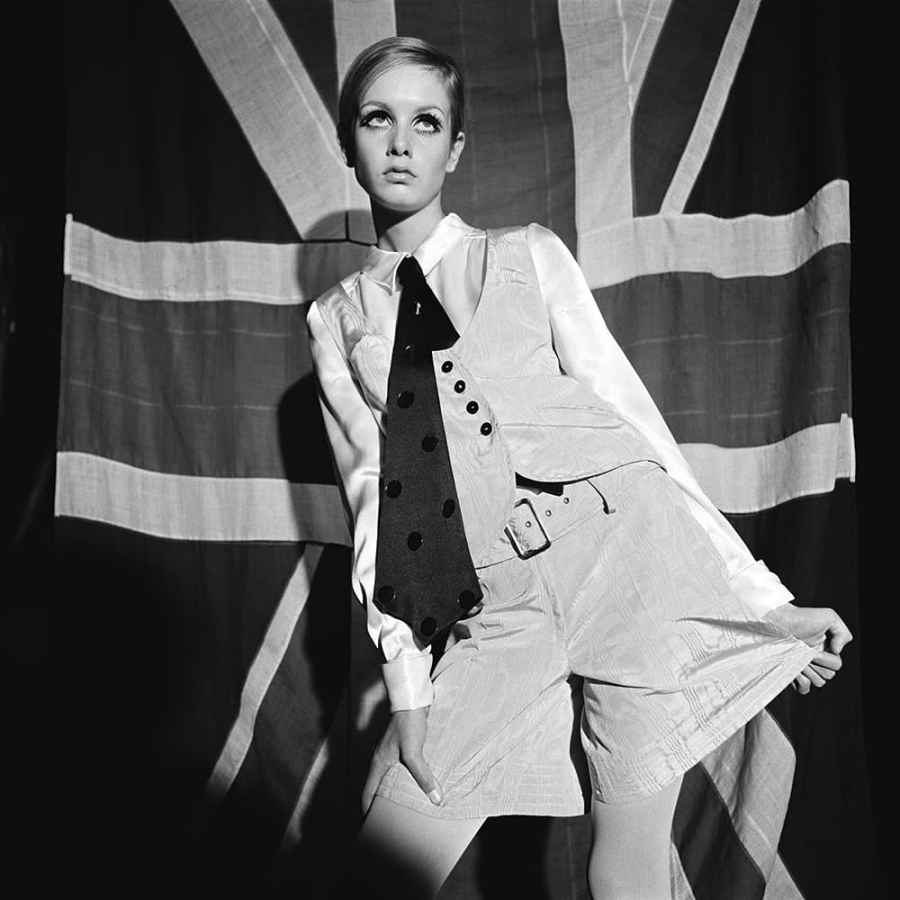The orignal
Twiggy
Terence Donovan, 1966
While it may look like it was taken for a Vogue cover shoot, this photo of Twiggy was from an unpublished frame from a fashion shoot for an issue of Woman’s Own in1966. The simple yet striking concept couldn’t be more hardwired to the Swinging Sixties and the new wave of fashion photography that Terence Donovan and his peers were creating. Strong and confident, it’s an image that confronts the viewer and suggests Britain, thanks to the presence of the Union Jack, is at the forefront of fashion.
Classics revisisted
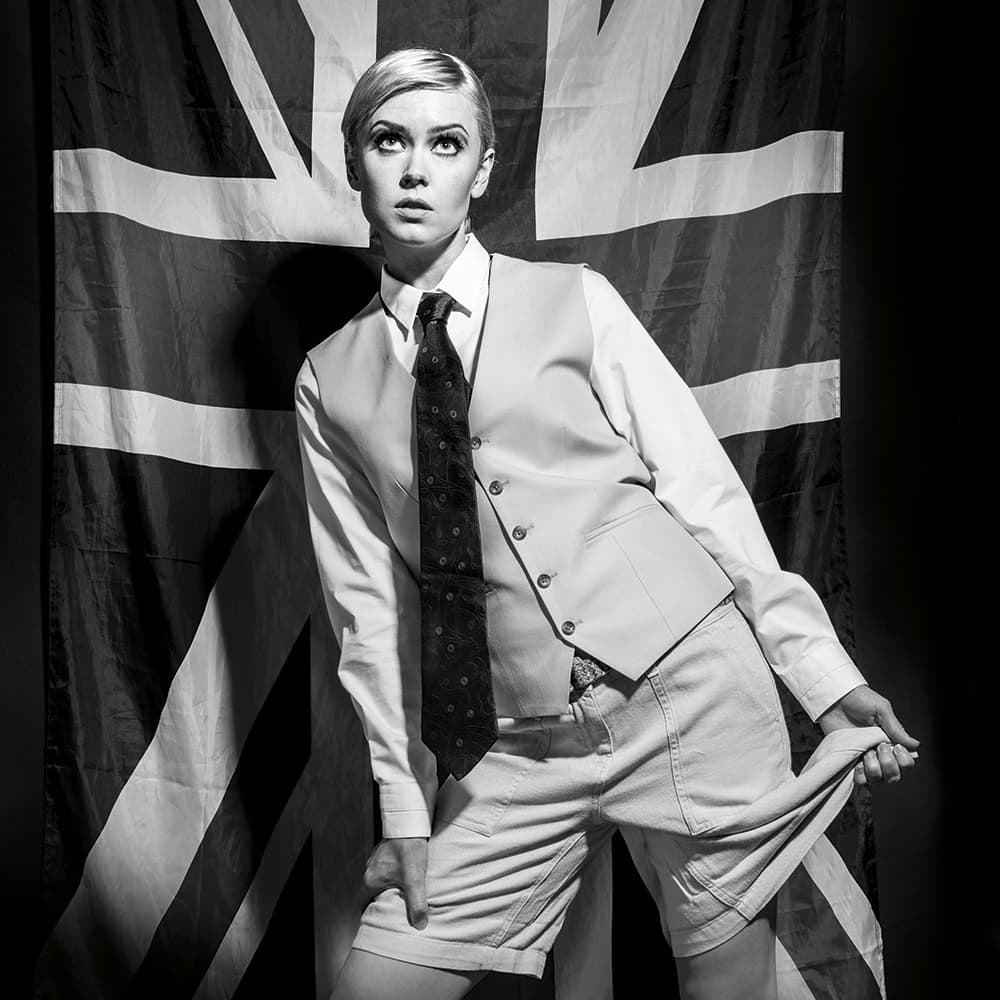
Twiggy by Andrew Sydenham. Two lights were used for our recreation. The key light came in from top right, with barn doors to direct it, while a second light was positioned to the left and angled upwards with a softbox for fill.
Terence Donovan and his peers David Bailey and Brian Duffy, nicknamed The Terrible Three by the press, would transform fashion photography in the ’60s, bringing a new spontaneity and swagger to the genre that hadn’t been seen before.
Like Bailey and Duffy, Donovan came from a working-class East London background. He opened his first studio aged just 23. Early success came with a shoot of men’s fashion for Man About Town in 1961, and for the same magazine a year later, a series of portraits of actress Julie Christie. His informal, almost voyeuristic style, thanks to Christie’s gaze never meeting the lens, was groundbreaking.
Alongside his editorial work, Donovan’s commercial workload steadily grew. This would see him run a well-oiled professional practice, with multiple sittings in a single day not unheard of.
In 1996, at the age of 60, Donovan took his own life. It was a shock for those who saw this enormously talented man disappear into his studio and kill himself. It transpired at the inquest that he’d been taking steroids for a skin condition, and a side effect was depression.
He was a man who never looked back. ‘These are the ’90s?’ he’d roar at anyone remarking upon the celebrity of his youth. ‘That was then – this is now.’
How we recreated the picture
1 Outfit

One of the biggest challenges for this recreation was getting the right outfit. After an exhausting and ultimately fruitless search of the various costume and prop specialists in London, we had to resort to the closest match we could find on the high street, with the tie supplied by Andrew Sydenham.
2 Make-up

To help capture the essence of the 1966 shoot, a professional make-up artist is essential to recreate the style and look we’re after. Once the finishing touches have been applied and the hair is arranged, it’s time to place the model in front of the studio lights for the shoot.
3 The shoot
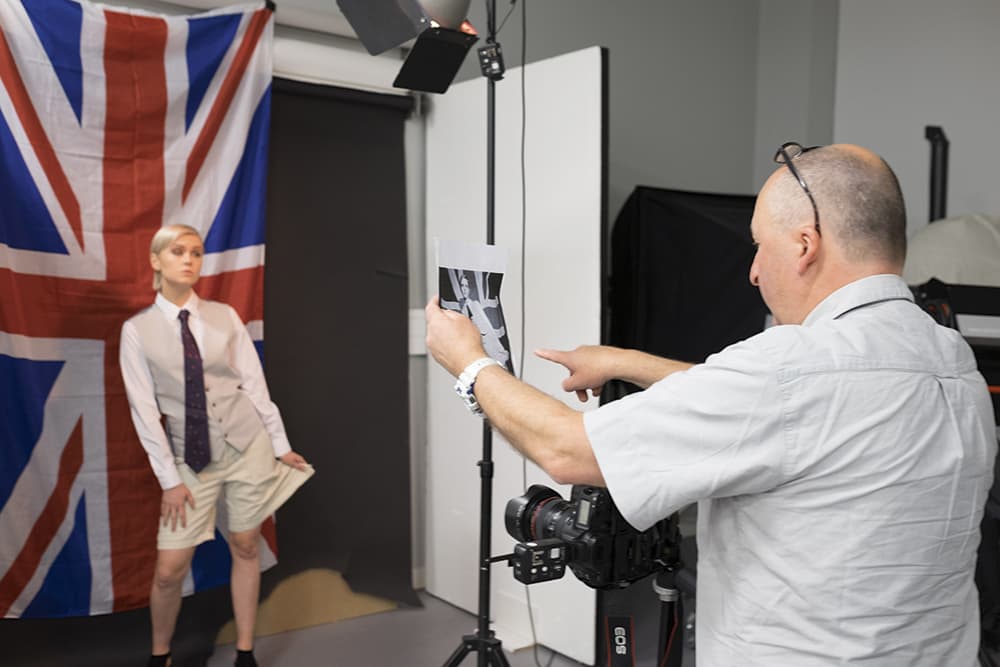
With the lights and backdrop in place, the next task is to get the model to move into the pose held by Twiggy in the original. It’s handy to have a copy of the original image to hand. We constantly review the images as they come through onto the computer from the camera (shooting tethered), to make minor adjustments.
4 Mono conversion
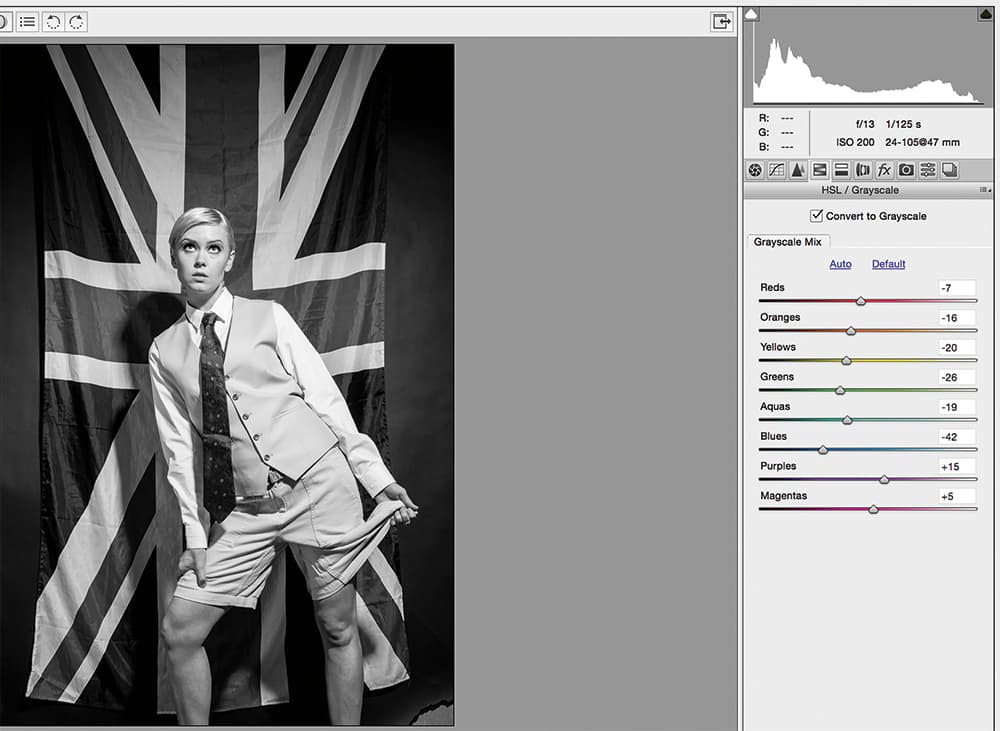
Rather than make the Basic adjustments first, we’ll look to do the mono conversion initially, allowing us to get the tones right – especially in the flag. This requires the Red and Blue sliders to be altered, before moving on to the Basic adjustment tab for some global tweaks.
5 Darken edges
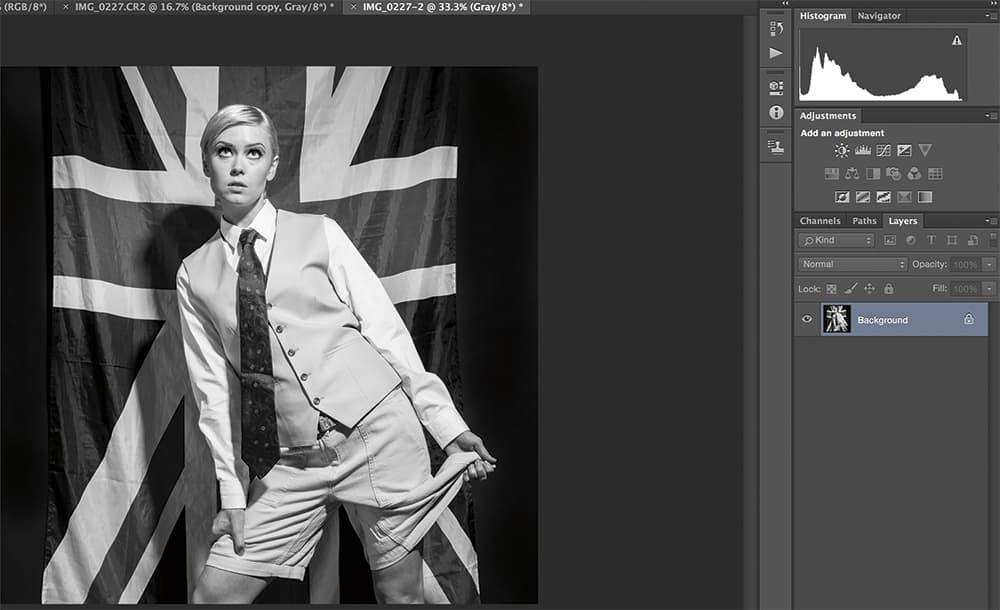
Once we’ve boosted the Clarity and dragged the Blacks slider to the left, it’s time to bring the image into Photoshop. Having cropped it to a square format, our next main task is to darken down the edges of the image. We’ll do this using the Burn Tool, with a moderate strength set.
6 Boost contrast

We want to selectively boost the Contrast and Clarity in the face of our model. We can do this easily by using the Adjustment Brush in the Camera Raw filter. We dial in our settings and just brush over the facial features to add more punch.
7 Enhance shadow
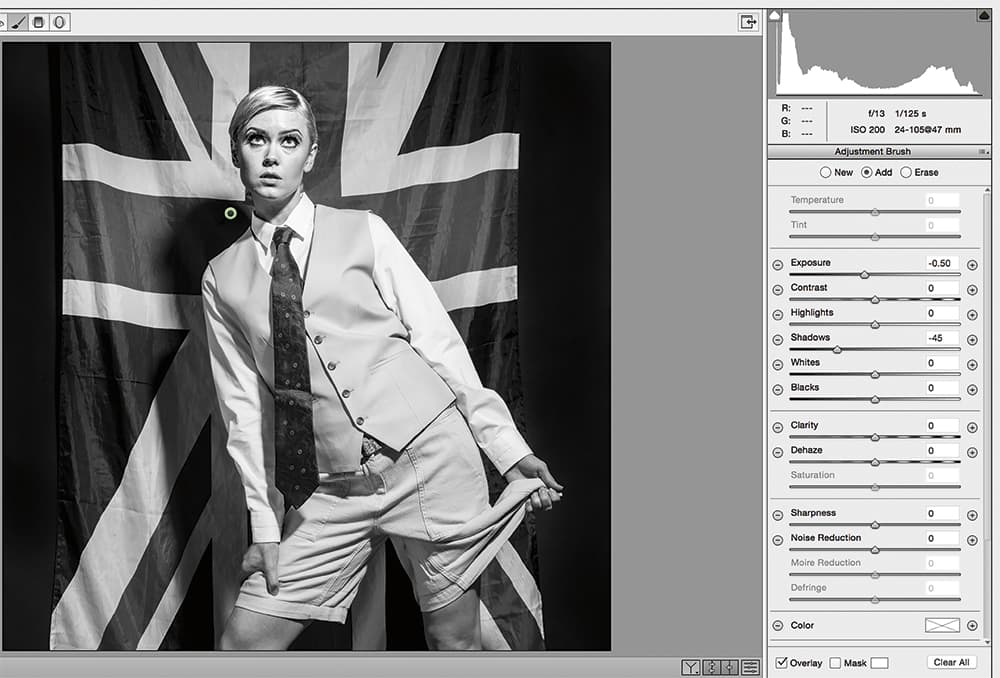
Staying in the Camera Raw filter, and using a new Adjustment Brush, we’ll enhance the shadow behind our model – we’ll decrease Exposure and Shadows, and gently brush around the side. The tie also needs to be darkened, so using a new Adjustment Brush again, we’ll brush over that with a reduced exposure.
8 Bottom left

There’s quite a strong shadow cast in the bottom left of the original that we need to mimic here, so using the Brush Tool with black selected and with a soft edge, we can gently brush over that corner. It’s best to use a low Opacity setting here for more control, building it up gradually.
9 Finishing touches
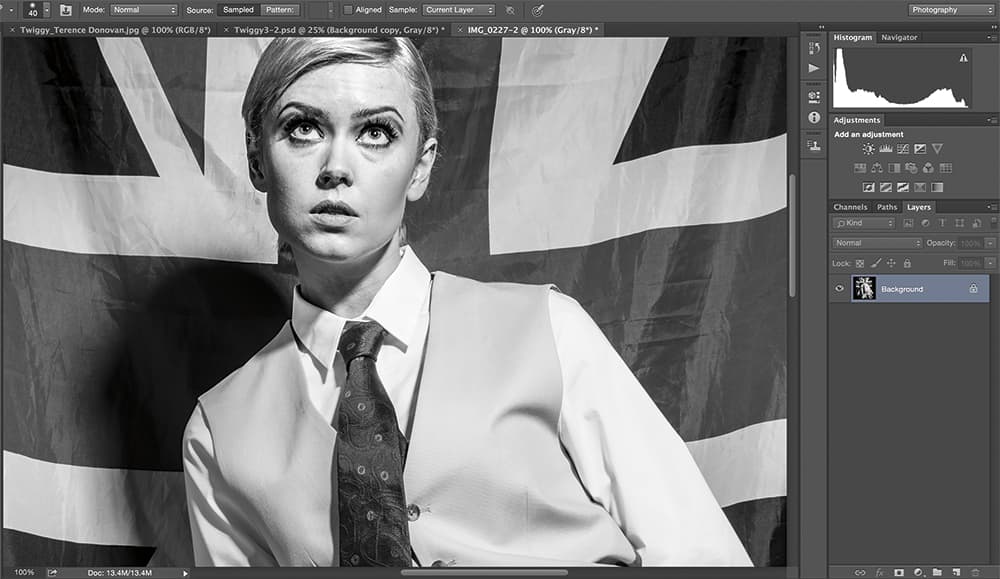
With most of the major changes made, it’s now time to finish the shot with a few little tweaks to the image. We’ll use the Healing Brush to remove any blemishes on the face and smooth it, while we’ll also apply some minor dodging and burning to the image in parts.
Further reading

Terence Donovan: Portraits
Price: £35, Damiani, 2016
Published to coincide with an exhibition at the Photographer’s Gallery, Terence Donovan: Portraits is the
first book dedicated to the legendary photographer’s portraiture. Alongside iconic portraits is work never previously published or exhibited.
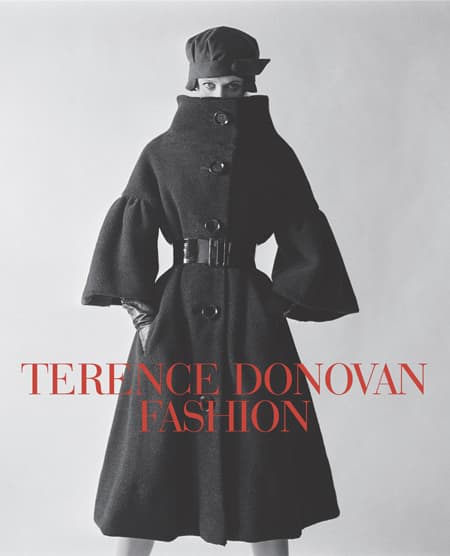
Terence Donovan: Fashion
Price: £45, Art/Books, 2012
This was the first time Donovan’s fashion pictures were collected in book form. From the gritty 1960s and ’70s to the vibrant ’80s and ’90s, the book reveals how his invention and experimentation influenced generations to come.
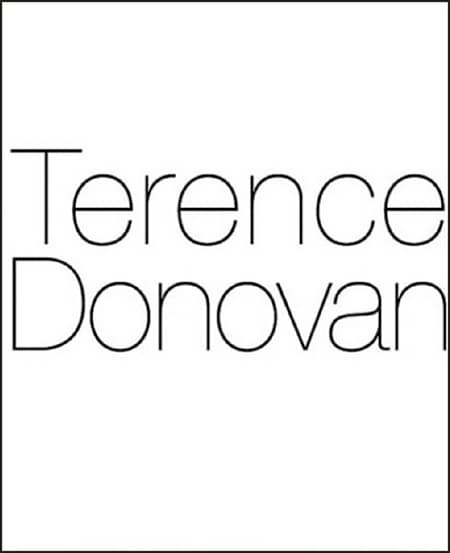
Terence Donovan: The Photographs
Price: £31, Little Brown, 2000
Terence Donovan: Speed of Light in association with Ricoh is on display at The Photographers’ Gallery from 15 July www.tpg.org.uk. Terence Donovan Portraits is published by Damiani at £35.00 www.damianieditore.com.
This stunning retrospective of some of Donovan’s best-known images (as well as some previously unpublished) has been compiled with the support of his wife, and runs to almost 300 pages.

